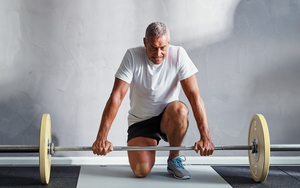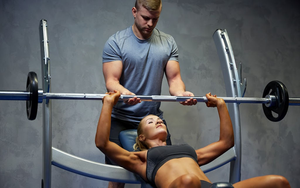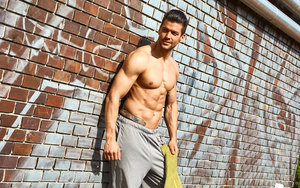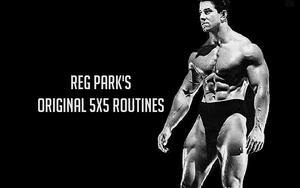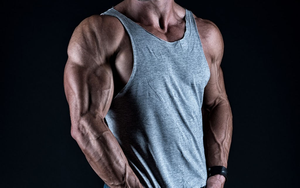
How To Train With Back Pain
If you lift heavy enough, long enough, eventually there is a pretty good chance that your lower back will be telling you to back off.
Many times I've had low-back issues - tight QL ligaments, misaligned sacroiliac joints and pelvis - which caused me to back off of squats, deadlifts and loaded hinging movements for a bit while I did rehabilitate work for the aching back.
This poses a challenge - how can we set up our routine so that we can allow for our back to get a break from the most low-back intensive movements, while at the same time, those are the bread and butter of our routines?
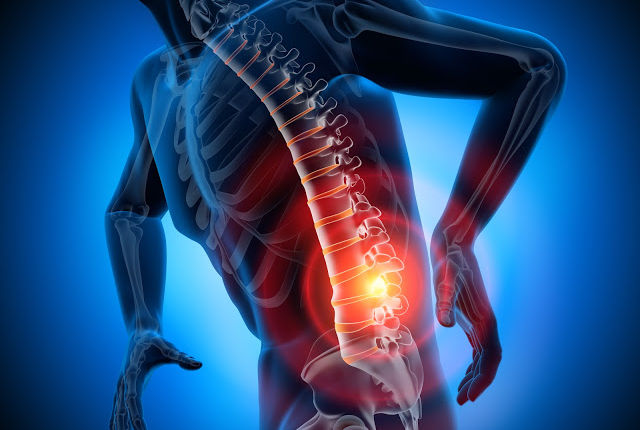
The Worst Offenders
One would think it is the causes are invariably from doing heavy squats or deadlifts. Doing either of these in bad form, especially with bad form and neglecting supplementary work to stabilize the core is asking for back problems eventually.
When it comes to herniated lumbar discs, one of the biggest culprits is actually the leg press.
On the leg press with a heavy load, the upper body is pinned against the back rest causing an unnatural position of the hips as the load comes toward you. When one goes into excessive range of motion and allows the hips to fishtail forward, it creates tremendous shearing forces across the discs.
A much better option is to do unilateral leg presses. Several companies also make leg press machines specifically designed to be used in this manner.
Do You Even Have to Squat or Deadlift?
There are many good arguments out there that some of the population might not actually be best anatomically suited to do the back squat or conventional deadlift, based on their anatomy.
Personally I think this is true- to a degree.
In the preceding link, one trainer argues that the only segment of the population that has to squat and deadlift are powerlifters, as they are contested on those lifts.
There is the analogy that if you take two trainees, one who is stuck at squatting the same weight for the past year and another who has been consistently adding weight to his leg press, guess who will end up with bigger, stronger legs?
But that is only insofar as gaining muscle is concerned and there is more to training than that, especially if what you are doing is reinforcing bad postural alignment.
Having said that, there is also the argument that since our lifestyles have become much more sedentary than our ancestors, sitting all day long at our jobs, we likely need the most primal lift of them all - picking a heavy object off of the ground - some sort of deadlift, as well as functionally supportive movements.
Sitting in in front of a computer screen all day sets us up for all kinds of postural problems, kyphotic upper body posture, shortening muscles such as hip flexors and hamstrings and creating functional misalignments usually in the frontal (sagittal) plane of movement, either forward flexion or backwards extension. Those two modes of flexion is where the imbalances typically originate.
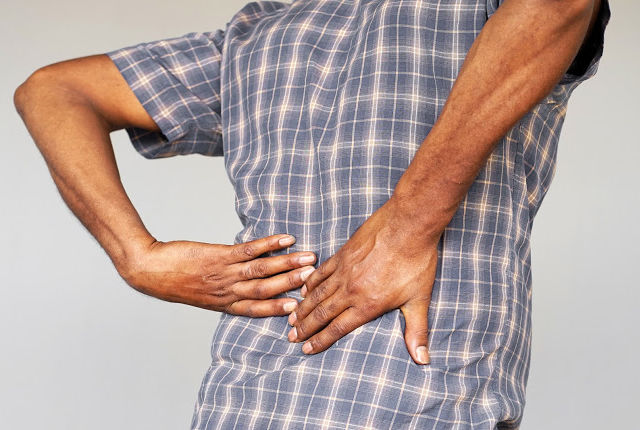
Ruling Out More Severe Back Issues
There are several vital things to take note of. If your back pain has come on suddenly and there is any numbness or loss of sensation down your leg or the back of your leg or tingling in the feet or toes, it could be indicative of nerve compression and needs prompt medical attention.
Movements to Avoid With Back Pain
Generally speaking any sort of hip hinge under load will potentially make things worse. Deadlifts, squats, bent over rows, leg press and obvious ones such as good mornings. Be careful of explosive hinges as well, such as cleans.
Another thing to be careful of is with movements that create an axial, compressive force on the spine. If you have disc issues, things like standing overhead press and shrugs can be painful.
The most important rule as always is: if something hurts, don't do it, and focus on getting better by addressing and correcting the underlying problems.
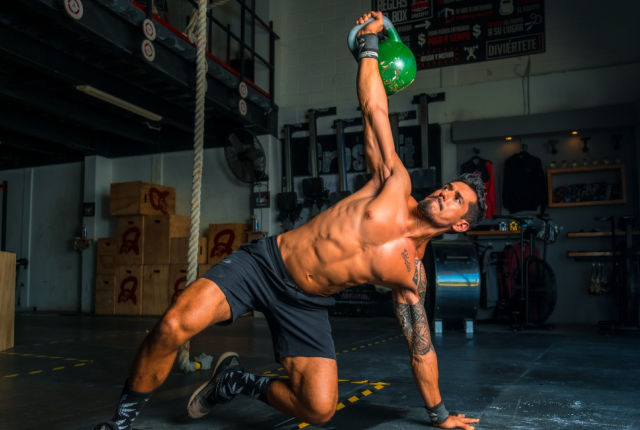
Squat and Deadlift Variants For Trainers With Back Problems
As far as these lifts are concerned, thankfully we have many options.
Alternatives to Back Squats
- Goblet Squat. I really like this as an option as you are a) forced to keep the weight against your body, which b) keeps an upright position and c) still limiting the angle of direct axial compressive load on the spine. To make it easy on your back you can set the dumbbell on its end on a bench to allow you to get it into position easier.
- Split Squat. Unilateral movements like this are key to core stability and working some intrinsic muscles that facilitate this, especially if all you normally do is bilateral movements like squats and deadlifts.
- Trap bar deadlift. Despite its name, the trap bar deadlift is actually a quad-centric movement more than a hinge. It allows you to work your legs through a full range of motion while preventing you from being pulled forward as you would by a regular squat or deadlift.
- Racked Dumbbell or Kettlebell Front Squats. These are great movements which can give your legs a hell of a workout, while not needing to handle very heavy loads.
- Single Leg Press. The best machines to do this are ones like the one by Hammer Strength called the Iso-Lateral Leg Press. It allows pressing in a horizontal plane parallel with the floor while allowing you to stabilize the pelvis by keeping your other foot flat on the floor, also preventing your hips and rear to come off the seat as can happen with standard 45 degree leg press machines.
Alternatives to Deadlifts
- Dumbbell One-Arm Sumo Deadlift. This is another good example of a supportive unilateral movement. A loading bias to one side of the body will help create a stronger, more stable core and strengthen the fascia throughout the thoracic and lumbosacral spine.
You throw your hips back and bend at the knees as you reach down with one arm and pick up the dumbbell, as you shoot your hips forward, bringing the weight up to below your waist. Then you reverse this, setting the weight back down on the floor and grab with the opposite arm and repeat. The non-working arm can be on your hip or behind your back. - Landmine Deadlift. This deadlift alternative puts a lot of focus on glute and hamstring activation and core stability and is easy to learn. The more upright position throughout the movement also makes it a good option for anyone with lower back problems.
- Rack Pull or Partial Deadlift. Shortening the range of motion by limiting the starting point will shorten the lever arm - your spine in this case - which will decrease the shearing forces on the fulcrum - your low back/hips/pelvis. This can also be done with heavy dumbbells as well, pulling them off of two supporting benches.
Stabilizing The Core and Increasing Glute Strength
Not only in helping you rehabilitate your low back pain issues, improving the stability of your core, spine, hips and upper back will ensure you are more likely to avoid these problems in the future.
Maintaining neutral lordosis in the spine and deliberate neural control of the glutes will keep the spine stable through the range of movement in exercises where the greatest forces to the lower back occur.
Best Exercises for Core and Glute Strength
- Glute Bridge
- Single-Leg Glute Bridge
- Hip Thrust
- Plank
- Side Plank
- Turkish Get-Up
- Glute-Ham Raises
- Reverse Hyperextensions
- Hollow Body Hold
- Table Bridges
- Prone Back Extensions or "Supermans"
A Sample Routine For Training With Back Pain
For a simple example here is a so-called "A/B" split, comprising of two different workouts, where all the stuff that would otherwise stress the low back is done on one day to maximize rest on those connective tissues, ligaments and so forth.
So we are looking at a split which consists of: legs/back/biceps on day one, and chest/shoulders/triceps on day two.
The rationale is to have a back friendly workout, with no squats, full deadlifts, and the most rest for low back.
All the back and leg related movements done on one day, and then its up to you how many days to space in between.
Likely the best option for this split could be one on, one off, or three days a week.
Day One
- Flat Dumbbell Bench Press
- Standing One-Arm Dumbbell Shoulder Press
- Dips or Close-Grip Bench Press
- Lying Barbell Triceps Extensions
- Core: Planks, Hollow Body Hold and Glute Bridges
Day Two
- Single Leg Press or Goblet Squat
- Single DB Sumo Deadlift or Trap-Bar Deadlift
- Chest-Supported Rows or One-Arm Dumbbell Rows
- Chin-Ups or Pulldowns
- Core: Hip Thrust, Turkish Get-Ups and Supermans
The parameters on all but the arm exercises are 3x5 with 80% of 1RM, followed by 2x12-15 with 55% of 1RM. For triceps/biceps, I would hit 3-4 sets of 10-15.
As an aside, for more information from the foremost expert on back issues, Dr. Stuart McGill, I would recommend visiting his website: Backfitpro.com

